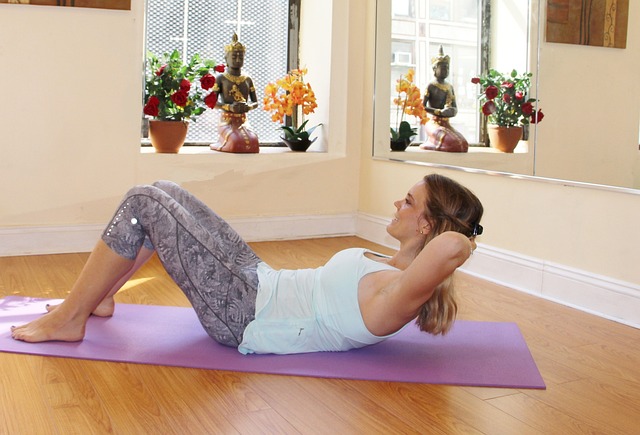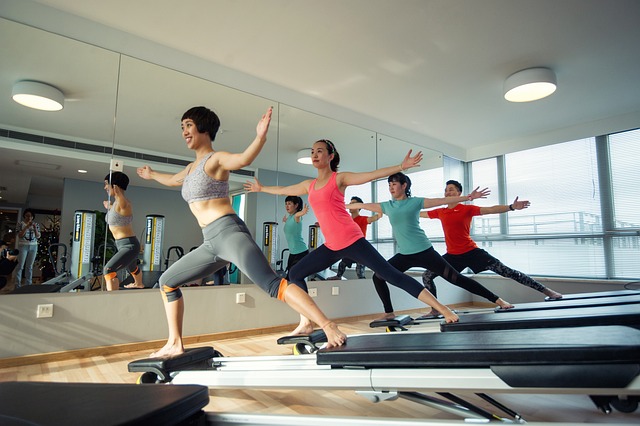Joseph Pilates created Pilates as a functional workout modality. Pilates emphasizes core stability, which is essential for having a balanced body. Pilates movements attempt to strengthen muscles, develop flexibility, and increase joint range of motion.
Pilates is a “functional fitness” program, which means that its fundamental concepts strive to develop more efficient and more graceful movement in everyday life, such as better posture.
Pilates has been shown to be so beneficial that it is frequently employed in physical therapy and rehabilitation settings. The Pilates hundred is perhaps the most well-known Pilates exercise, and it serves to develop and stabilize the abdominals, torso, shoulders, and other areas.
It is frequently used as a warm-up before performing other essential Pilates movements.
The basic movement concepts upon which the Pilates method is constructed are taught in the following series of fundamental Pilates exercises, which use full-body awareness that begins with core strength. You can do these on your own or as a warm-up before your normal workout.
Constructive Rest is the Pilates starting position.
There is much more to constructive Rest than meets the eye. The purpose of this modest exercise is to find your neutral spine. By squeezing your lower back against the floor and then releasing the spine into a little natural arch or C-shape curve, you can achieve this.
This will be your starting position for the Rest of the workouts.
Lie on your back, arms at your sides; knees bent, legs and feet parallel, about hip-distance apart.
- Take a long, deep breath in.
- Exhale and press your lower back onto the floor with your abdominals.
- Tuck your tailbone under and draw your navel into your spine to round your spine (known as spinal flexion).
- Inhale to naturally release into a C-shape curve in your lower back.
- Exhale and shift your pelvis forward slightly to produce a larger curvature in your lower back which is known as spinal extension or the beginning of a backbend.
- Inhale to return to your neutral spine and take several deep breaths here.
Tip: When the three curves, lower, thoracic and cervical spine, are resting in their natural posture, you’ve found your neutral spine.
Pilates Head Nod
The Pilates head nod stretches and lengthens the spine, which is a primary goal of the Pilates method. It is an essential component of many Pilates movements that articulate the spine in forward bends and rolling exercises.
- Begin with a period of constructive Rest.
- Inhale to stretch the spine and lower the chin to the chest (your head stays on the mat).
- Exhale to bring your neck back to a neutral position.
- Inhale to slightly tilt the head back.
- Return to your neutral stance by exhaling.
Tip: It is not necessary to force your neck to move. Avoid straining your neck muscles by articulating natural motions in your cervical spine.
Pilates Arms Across
The primary purpose of Pilate’s arms is to maintain alignment while the arms go overhead, which challenges the torso. This move also helps to develop the shoulder’s range of motion.
- Inhale and raise your fingertips to the ceiling from constructive Rest.
- Exhale and raise your arms upwards and downward toward the floor behind you.
- Inhale and raise your arms to the ceiling once more.
- Lower your hands to the floor while exhaling.
- Keep your abs engaged while you lift and lower your arms with controlled movements.
Tip: Try not to let your arm movement impact the alignment of your ribs.
Angel Arms in Pilates
Though this exercise works a variety of upper-body muscles, angel arms, like the arms above, assist us in grasping how to move the arms and shoulders without sacrificing spine and rib cage alignment.
- Sweep your arms out to the sides along the floor as if you were constructing a snow angel from constructive Rest.
- However, the shoulders should not rise with the arms.
- Focus on keeping your shoulders away from your ears and down at all times.
- Exhale to bring your arms back to your sides.
- Repeat for a couple of rounds while breathing normally.
Tip: Keep your abs engaged and your ribs down.
Pelvic Clock for Pilates
The Pilates pelvic clock is a modest yet perceptive maneuver that promotes awareness of pelvic position and strengthens the muscles required for pelvic stability.

- Lie down on your back with your legs bent.
- Assume you have a clock placed flat on your lower abs. The number 12 is at your belly button, the number 3 is on your left hip, the number 6 is on your pubic bone, and the number 9 is on your right hip.
- Using your abdominal muscles to initiate and control the movement, travel around the clock in a clockwise direction, beginning with the 12 and ending with the 9.
- Maintain modest and controlled motions.
Tip: Don’t elevate your hips off the ground. The goal is to move your pelvis without harming the Rest of your body’s stability.
Knee Bends
The primary purpose of knee folds is to move your leg in its hip socket while maintaining pelvic stability. This type of activity is necessary for all types of functional movements that we perform in our daily lives, such as sitting, walking, and lifting.
- Lift one of your legs off the floor as you focus your core and draw your navel in toward your spine on an inhalation from constructive Rest.
- Allow for a deep hip fold.
- Exhale and place your foot back on the ground.
- Maintain control of the movement with your core as you lower—don’t let your leg muscles take over.
- Maintain a firm grip on the mat with your tailbone.
Tip: This is about creating a deep hip fold, so don’t let your hip rise up with your leg. The goal of this movement is to keep your pelvis stable and neutral.
To Conclude
Pilates exercises are beneficial to a lot of people, and this set of six motions is an excellent way to get started. While Pilates can enhance joint range of motion as well as muscular strength and flexibility, it is not for everyone. If you have joint discomfort or musculoskeletal or spinal problems, talk to your doctor about whether the Pilates approach is good for you.
To get the best out of this functional training technique, once you’ve been approved for exercise, you can benefit from learning with a qualified Pilates teacher or licensed physical therapist that incorporates Pilates into their rehabilitation program.

